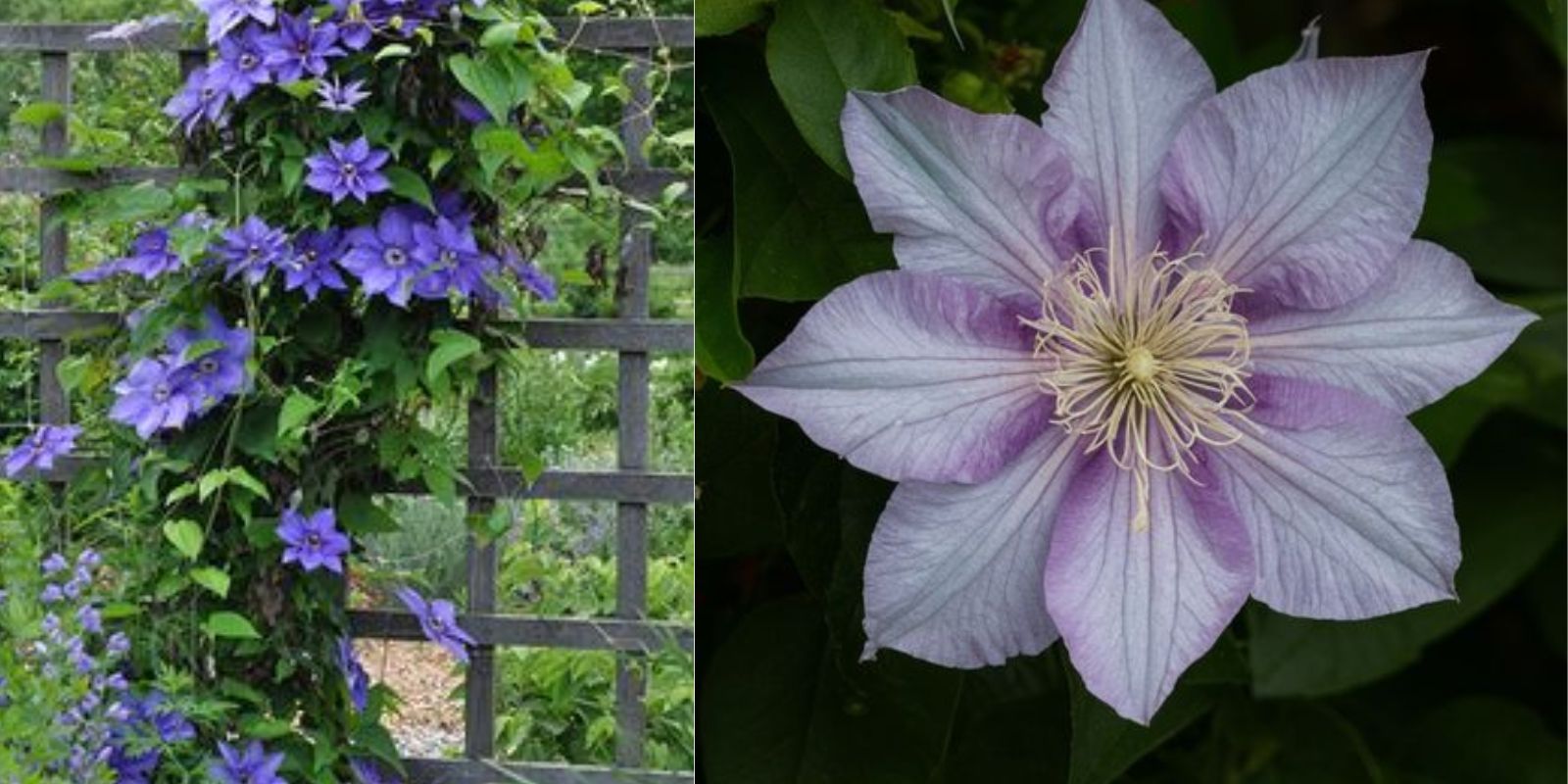Clematis, known for its stunning and diverse blooms, is a favorite among gardeners for its ability to transform gardens with vibrant colors and beautiful, showy flowers. This versatile climbing plant, which belongs to the Ranunculaceae family, offers a range of varieties that can suit various garden styles and conditions. This comprehensive guide will provide you with all the information you need to successfully grow and care for Clematis, ensuring a spectacular display of blooms year after year.
Introduction
Clematis, often referred to as the “Queen of Climbers,” is a genus of about 300 species and numerous hybrids. The flowers come in a wide array of shapes, sizes, and colors, making them a versatile addition to any garden. Clematis can be used to adorn fences, trellises, arbors, and even as ground cover. With proper care, these plants can flourish and provide a stunning floral display that will enhance any outdoor space.
Steps to Grow and Care for Clematis
1. Planting
Choosing the Right Location: Clematis thrives in full sun to partial shade. Ideally, they should receive at least six hours of sunlight daily. However, the roots prefer to be kept cool, which can be achieved by planting low-growing plants around the base or using mulch.
Preparing the Soil: Clematis prefers well-draining soil that is rich in organic matter. Before planting, amend the soil with compost or well-rotted manure to improve its fertility and structure. The soil pH should be slightly acidic to neutral, around 6.5 to 7.0.
Planting Clematis: The best time to plant Clematis is in spring or fall. Dig a hole twice the width of the root ball and deep enough to cover the first set of leaves. Position the plant slightly deeper than it was in the pot, which encourages strong stem development. Backfill with soil, firm it gently, and water thoroughly.
2. Providing Support
Trellises and Supports: Clematis is a climbing vine that requires support to grow vertically. Install a trellis, arbor, or other support structures at planting time. Ensure that the support is sturdy enough to handle the weight of a mature plant and provide plenty of room for the vine to spread.
Training the Vines: As the plant grows, gently tie the stems to the support using garden twine or soft ties. This helps guide the plant and prevent damage from wind or heavy blooms.
3. Watering
Consistent Moisture: Clematis plants need consistent moisture, especially during the growing season. Water deeply and regularly to keep the soil evenly moist but not waterlogged. Mulching around the base of the plant helps retain moisture and keep the roots cool.
Avoiding Overwatering: While Clematis likes moist soil, it does not tolerate waterlogged conditions. Ensure good drainage by planting in well-draining soil and avoiding areas where water tends to pool.
4. Fertilizing
Feeding the Plants: Apply a balanced fertilizer, such as a 10-10-10 formula, in early spring when new growth begins. Follow the manufacturer’s instructions for application rates.
Boosting Blooms: After the first bloom, apply a low-nitrogen fertilizer, like a 5-10-10 mix, to encourage more flowers and strong root development. Avoid over-fertilizing, as this can lead to lush foliage at the expense of flowers.
5. Pruning
Understanding Pruning Groups: Clematis plants are categorized into three pruning groups based on their blooming habits. Understanding the group your Clematis belongs to is crucial for proper pruning.
Group 1 (Early Bloomers): These clematis bloom on old wood and should be pruned lightly after flowering to remove dead or weak stems.
Group 2 (Repeat Bloomers): These clematis bloom on both old and new wood. Prune in late winter or early spring to remove dead stems, and lightly trim after the first bloom to encourage a second flush of flowers.
Group 3 (Late Bloomers): These clematis bloom on new wood and should be pruned hard in late winter or early spring. Cut back all stems to about 12-18 inches above the ground.
6. Pest and Disease Management
Common Pests: Clematis can be affected by pests such as aphids, spider mites, and slugs. Regularly inspect your plants for signs of pests and treat them promptly with insecticidal soap or neem oil.
Preventing Diseases: Clematis is susceptible to diseases like powdery mildew and clematis wilt. Ensure good air circulation by spacing plants adequately and avoiding overhead watering. Remove and dispose of any infected plant material to prevent the spread of disease.
Conclusion
Clematis is a captivating plant that can bring a touch of elegance and vibrant color to any garden. By following these steps, you can ensure your Clematis thrives and provides a spectacular display of flowers year after year. From choosing the right planting location and providing adequate support to watering, fertilizing, pruning, and managing pests and diseases, each aspect of care is essential for the health and beauty of your Clematis.
Whether you’re a seasoned gardener or a beginner, the Clematis is a rewarding plant that will enhance your garden with its stunning blooms and climbing habit. With a little attention and care, you can enjoy the beauty and charm of Clematis in your outdoor space, creating a lush and colorful environment that will delight you and your guests. Try these tips and watch your Clematis flourish, transforming your garden into a botanical masterpiece.

